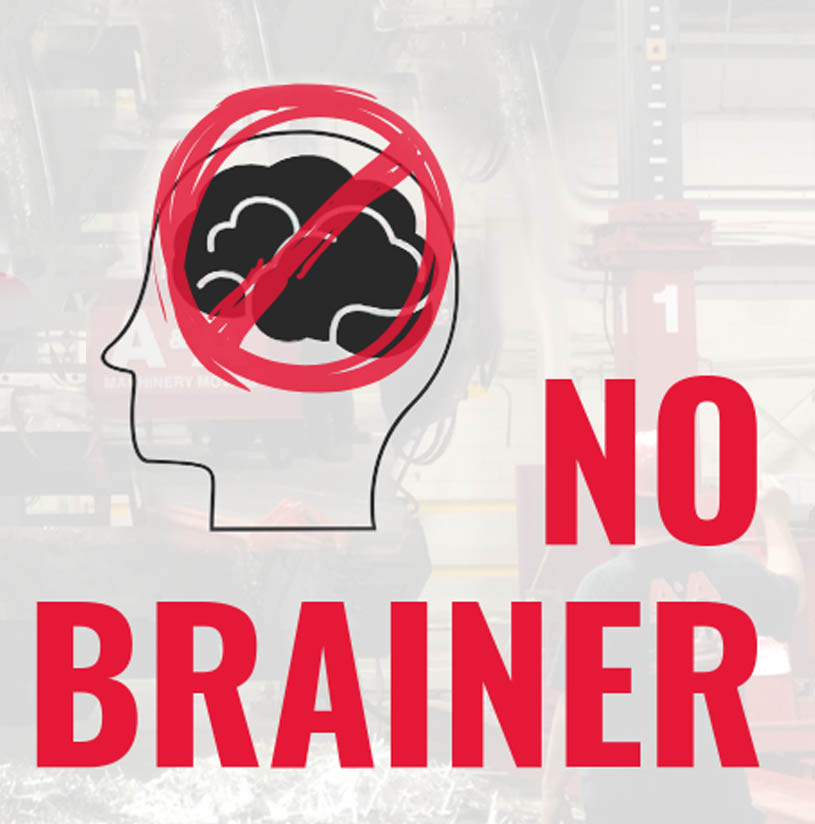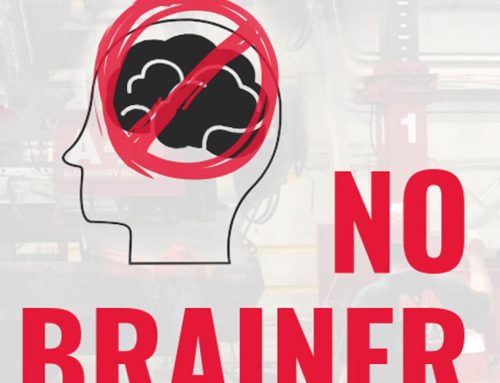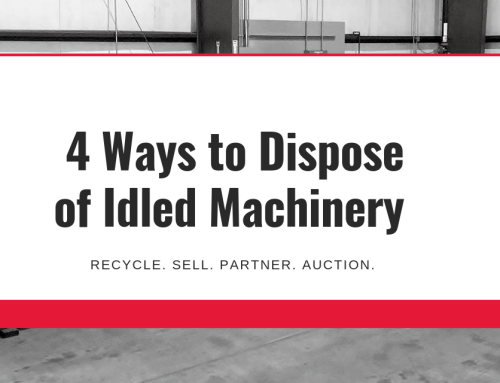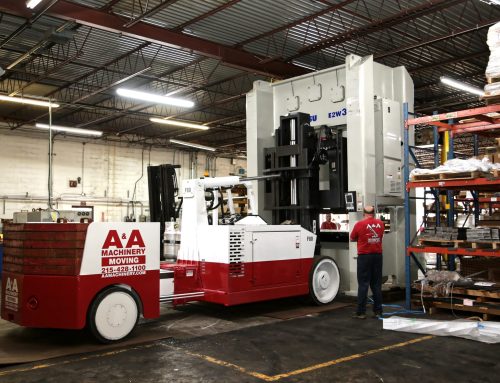Share
Machine Movers & Riggers – What Do They Do?
Rigging or Machine Moving is the art of moving, lifting, landing or assembly/erection of large or heavy machines and loads. Sometimes it’s not even that the load is overly large, but that it’s in a location where installing or moving it requires the load to travel through environments that are remote, difficult to access, or not designed to handle the size and weight of the object. Regardless of the weight and size or location of the load, it’s not a simple operation. The operation requires a combination of creative ingenuity and acquired skills and knowledge. If not planned and executed properly, things can go wrong, sometimes horribly wrong. The craft professionals with the expertise and skill-sets to do this work and perform it safely is a rigger or machine mover.
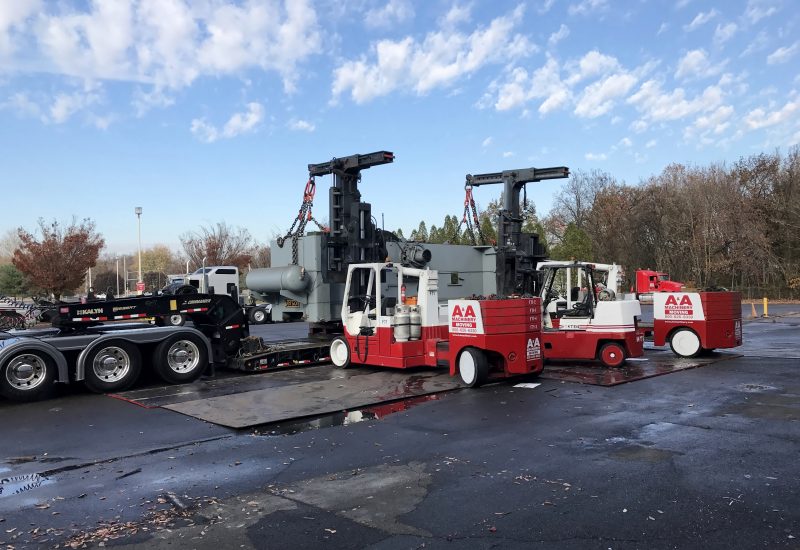
What is the Difference Between a Rigger and Machine Mover?
Before we dive into the typical duties of riggers and machine movers, we need to point out the difference between the two professions.
In the construction and industrial worlds, a rigger will move any type of load, whereas a machine mover specializes in the moving, erecting, assembling and/or relocating of machinery and equipment. Both professionals do however rely on basic to extremely specialized equipment to lift, land, move, support, balance, manipulate, level, align and position loads.
Simply put, a rigger is a skilled-craft professional who engages in the lifting and moving of large objects, whereas a machinery mover does the same, but specializes in machinery and equipment that may additionally require assembly, erection, leveling and aligning.
Typical Duties of Riggers & Machine Mover
A day in the life of a rigger and machine mover is never the same because not every machine is the same. So, the duties of both these professions change based on a few factors such as the size, weight, and location of the machinery, as well as the industry or environment of the project.
Let’s look at the typical duties of these professions:
- Attach cables and/or ropes to properly secure the load
- Securing the load properly will minimize the potential for damage to the load
- Use vital types of rigging tools such as slings, shackles, winches, and chokers for loading and hoisting equipment
- Shackles and slings are rated to handle a specific weight and riggers must understand and know the ratings for each shackle and sling in their toolbox
- Examine the size and weight of the load to determine the best rigging equipment to move and relocate
- Equipment could include hoists, cranes, industrial lift trucks, dollies/skates, manual or hydraulic gantries, hydraulic jacking systems, sliders, heavy trailers, self-propelled transporters or any manner of other highly-specialized lifting equipment designed to handle large and heavy loads
- Identify any potential hazards associated with lifting or moving the heavy load
- Determine the center of gravity of the load to keep it balanced and stabled correctly
- Use hand signals and verbal commands to appropriately communicate and direct the operator on how to best move the load
- The rigger or signal-person often acts as the “eyes” of the equipment or crane operator and directs their movements
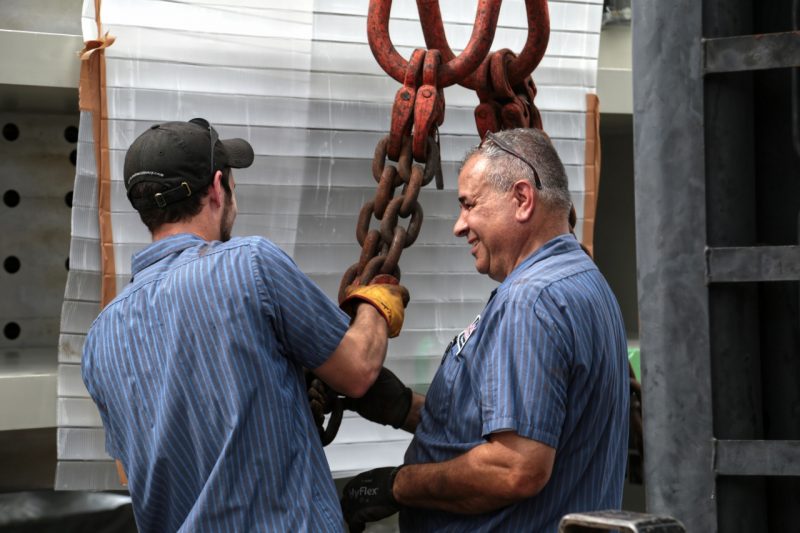
Skills & Traits That Make Up a Good Rigger or Machine Mover
There are many good riggers and machine movers out there who didn’t start out in the specialized work of rigging. But, these individuals have common traits such as being mechanically-inclined, enjoy working with their hands, and a passion for tinkering with objects; taking them apart and putting them back together.
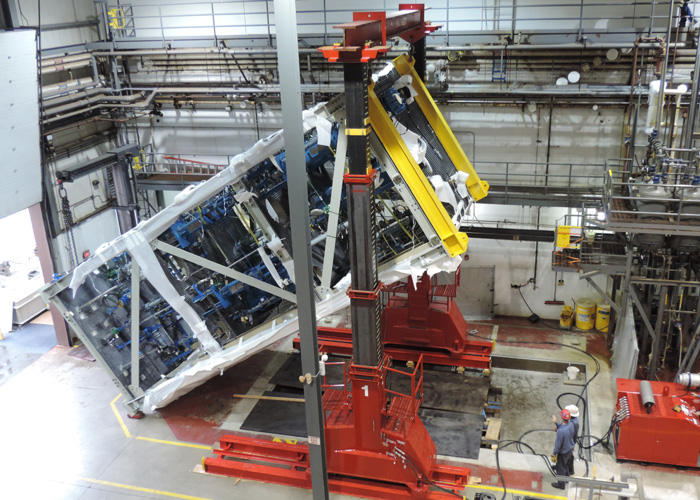
Most riggers tend to be somewhat creative and enjoy a challenge. They enjoy the puzzle aspect of figuring out how to move something that may at first glance impossible to do but can be deeply rewarding.
A rigger’s job revolves around perception and how these large, heavy objects they’re moving will fit into tight quarters within a plant, facility or, shop. They’re responsible for creating innovative solutions for how to fit a square peg into a round hole.
Many riggers and machine movers also have an innate appreciation and fascination with engineering, especially where it pertains to the marvels of huge pieces of machinery and the clever, specialized rigging equipment such as cranes, lifts transporters and other specialized equipment.
Strong communication skills are important. A good rigger, machine mover, and signal-person understand they’re the “eyes” of the operator and are responsible for safely and efficiently directing the move.
And, because riggers and machinery movers work as a team and can have different responsibilities during the planning and execution of the work, the desire and ability to work within a high-functioning team are critically important.
Also importantly, a good rigger is always eager to learn and better their skill-sets as a skilled-craft professional. Many leaders in the rigging and heavy lifting industry have great insights, techniques, and tips for becoming a better rigger. Engaging with these individuals through association like the Specialized Carriers & Rigging Association (SC&RA) is a great place to start.
Licenses & Certifications for Riggers and Machine Movers
On jobs, riggers and machine movers are often performing work that involves utilizing some sort of heavy or specialized equipment such as forklifts, Versa-Lifts, tri-lifters, cranes, and more. There are often licensing and certification requirements for the different equipment, typically provided by or through the employer. A reputable employer will also provide ongoing and regular training along with the specific, manufacturer-provided training for some of the highly specialized equipment.
The National Commission for the Certification of Crane Operators (NCCCO) provides certification training and testing for crane operators, signal persons, and riggers. A rigger can study to become certified and prove their skill-sets at crane rigger employment. For the certification, rigger candidates must complete and pass both a written and practical test, which measures their competency.
Our Team of Rigging and Machine Moving Professionals
Our skilled-craft professionals are cross-trained in both rigging and machinery moving. Our teams take pride in the work they perform on a daily basis, moving and relocating large and sometimes massive pieces of machinery and industrial equipment. We’re known for having some of the most innovative and creative rigging professionals in the industry. Our customers see this first-hand when they Discover the A&A Difference.
We’re always looking to grow our team with individuals who are passionate about tinkering with mechanical objects, eager to learn and better their skill-sets, and can work on a team to provide our customers what we call the A&A Difference.
Interested in joining our team? Take a look at the open positions on our team and apply today.
Machine Movers & Riggers – What Do They Do?
Rigging or Machine Moving is the art of moving, lifting, landing or assembly/erection of large or heavy machines and loads. Sometimes it’s not even that the load is overly large, but that it’s in a location where installing or moving it requires the load to travel through environments that are remote, difficult to access, or not designed to handle the size and weight of the object. Regardless of the weight and size or location of the load, it’s not a simple operation. The operation requires a combination of creative ingenuity and acquired skills and knowledge. If not planned and executed properly, things can go wrong, sometimes horribly wrong. The craft professionals with the expertise and skill-sets to do this work and perform it safely is a rigger or machine mover.

What is the Difference Between a Rigger and Machine Mover?
Before we dive into the typical duties of riggers and machine movers, we need to point out the difference between the two professions.
In the construction and industrial worlds, a rigger will move any type of load, whereas a machine mover specializes in the moving, erecting, assembling and/or relocating of machinery and equipment. Both professionals do however rely on basic to extremely specialized equipment to lift, land, move, support, balance, manipulate, level, align and position loads.
Simply put, a rigger is a skilled-craft professional who engages in the lifting and moving of large objects, whereas a machinery mover does the same, but specializes in machinery and equipment that may additionally require assembly, erection, leveling and aligning.
Typical Duties of Riggers & Machine Mover
A day in the life of a rigger and machine mover is never the same because not every machine is the same. So, the duties of both these professions change based on a few factors such as the size, weight, and location of the machinery, as well as the industry or environment of the project.
Let’s look at the typical duties of these professions:
- Attach cables and/or ropes to properly secure the load
- Securing the load properly will minimize the potential for damage to the load
- Use vital types of rigging tools such as slings, shackles, winches, and chokers for loading and hoisting equipment
- Shackles and slings are rated to handle a specific weight and riggers must understand and know the ratings for each shackle and sling in their toolbox
- Examine the size and weight of the load to determine the best rigging equipment to move and relocate
- Equipment could include hoists, cranes, industrial lift trucks, dollies/skates, manual or hydraulic gantries, hydraulic jacking systems, sliders, heavy trailers, self-propelled transporters or any manner of other highly-specialized lifting equipment designed to handle large and heavy loads
- Identify any potential hazards associated with lifting or moving the heavy load
- Determine the center of gravity of the load to keep it balanced and stabled correctly
- Use hand signals and verbal commands to appropriately communicate and direct the operator on how to best move the load
- The rigger or signal-person often acts as the “eyes” of the equipment or crane operator and directs their movements

Skills & Traits That Make Up a Good Rigger or Machine Mover
There are many good riggers and machine movers out there who didn’t start out in the specialized work of rigging. But, these individuals have common traits such as being mechanically-inclined, enjoy working with their hands, and a passion for tinkering with objects; taking them apart and putting them back together.

Most riggers tend to be somewhat creative and enjoy a challenge. They enjoy the puzzle aspect of figuring out how to move something that may at first glance impossible to do but can be deeply rewarding.
A rigger’s job revolves around perception and how these large, heavy objects they’re moving will fit into tight quarters within a plant, facility or, shop. They’re responsible for creating innovative solutions for how to fit a square peg into a round hole.
Many riggers and machine movers also have an innate appreciation and fascination with engineering, especially where it pertains to the marvels of huge pieces of machinery and the clever, specialized rigging equipment such as cranes, lifts transporters and other specialized equipment.
Strong communication skills are important. A good rigger, machine mover, and signal-person understand they’re the “eyes” of the operator and are responsible for safely and efficiently directing the move.
And, because riggers and machinery movers work as a team and can have different responsibilities during the planning and execution of the work, the desire and ability to work within a high-functioning team are critically important.
Also importantly, a good rigger is always eager to learn and better their skill-sets as a skilled-craft professional. Many leaders in the rigging and heavy lifting industry have great insights, techniques, and tips for becoming a better rigger. Engaging with these individuals through association like the Specialized Carriers & Rigging Association (SC&RA) is a great place to start.
Licenses & Certifications for Riggers and Machine Movers
On jobs, riggers and machine movers are often performing work that involves utilizing some sort of heavy or specialized equipment such as forklifts, Versa-Lifts, tri-lifters, cranes, and more. There are often licensing and certification requirements for the different equipment, typically provided by or through the employer. A reputable employer will also provide ongoing and regular training along with the specific, manufacturer-provided training for some of the highly specialized equipment.
The National Commission for the Certification of Crane Operators (NCCCO) provides certification training and testing for crane operators, signal persons, and riggers. A rigger can study to become certified and prove their skill-sets at crane rigger employment. For the certification, rigger candidates must complete and pass both a written and practical test, which measures their competency.
Our Team of Rigging and Machine Moving Professionals
Our skilled-craft professionals are cross-trained in both rigging and machinery moving. Our teams take pride in the work they perform on a daily basis, moving and relocating large and sometimes massive pieces of machinery and industrial equipment. We’re known for having some of the most innovative and creative rigging professionals in the industry. Our customers see this first-hand when they Discover the A&A Difference.
We’re always looking to grow our team with individuals who are passionate about tinkering with mechanical objects, eager to learn and better their skill-sets, and can work on a team to provide our customers what we call the A&A Difference.
Interested in joining our team? Take a look at the open positions on our team and apply today.


